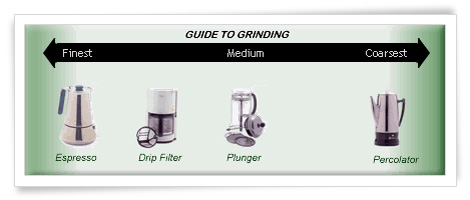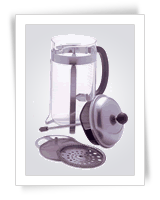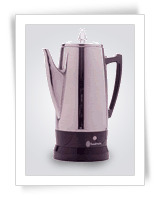Roasting
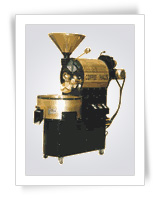 Unlike wine, coffee does not improve with age after roasting – the fresher it is (and the freshness maintained) the better it is.
Unlike wine, coffee does not improve with age after roasting – the fresher it is (and the freshness maintained) the better it is.
All the efforts that have gone into producing a top quality arabica coffee bean can be wasted if it is not roasted correctly.
The roasting process is vital in bringing out the best aroma and flavour and the distinctive characteristics of our regional coffee.
Only careful attention and small batch roasting can achieve this aim.
Jindebah coffee is only roasted by our “in house” roasters to our prescribed requirements. Our roasting facility is The Fresh Roast Coffee House, 30 Kemble Court Mitchell ACT where we also roast and blend premium coffees from around the world which can be ordered through this website. This freshly roasted coffee is immediately packed into pouches with a one way valve to ensure the coffee is kept “roaster fresh” to the consumer who can maintain this freshness as our pouches are resealable.
Our fine, smooth single origin espresso and plunger roasts suit a wide range of palates, whilst our unique stronger espresso blends cater for the gourmet espresso coffee drinkers. Quentin Ainscough, our roaster and director, won for Jindebah a Silver Award for our No 1 Espresso in Sydney Royal Fine Food Show and our coffees have now won a number of awards in this prestigious show.
Grinding
For best results grind fresh beans as you need them and the experts suggest that a burr grinder provides the better consistent grind .
 If you do not have a grinder Jindebah will specially grind for you to your requirements. The Fresh Roast Coffee House, Mitchell stocks top quality German and Swiss burr grinders, and some interesting hand grinders.
If you do not have a grinder Jindebah will specially grind for you to your requirements. The Fresh Roast Coffee House, Mitchell stocks top quality German and Swiss burr grinders, and some interesting hand grinders.
HOW MUCH COFFEE DO I USE ?
 The coffee industry’s accepted standard measure is 7 grams per cup, regardless of the style of coffee maker used – that is a rounded dessertspoon of ground coffee per cup serving. Naturally your personal taste may be different from the “experts” so if you prefer it stronger, use more grounds. For weaker coffee dilute the brewed coffee with hot water – using less coffee will alter the taste and add bitterness.
The coffee industry’s accepted standard measure is 7 grams per cup, regardless of the style of coffee maker used – that is a rounded dessertspoon of ground coffee per cup serving. Naturally your personal taste may be different from the “experts” so if you prefer it stronger, use more grounds. For weaker coffee dilute the brewed coffee with hot water – using less coffee will alter the taste and add bitterness.
We have stainless steel measuring spoons for sale at approximately the price of a cup of coffee.
SERVING NOTES
Coffee should not be left sitting in a warm brewer – to keep the coffee warm pour it into a thermos or air pot.
Always warm the cup before pouring coffee.
STORAGE TIPS
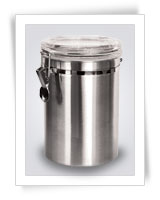 Ground coffee is best kept in re-sealable pouches or in airtight containers and stored in a cool dark area or the freezer, not the refrigerator. If storing coffee beans in the freezer make sure the beans you wish to use are thawed before grinding to allow for an even grind and the flavour to come through.
Ground coffee is best kept in re-sealable pouches or in airtight containers and stored in a cool dark area or the freezer, not the refrigerator. If storing coffee beans in the freezer make sure the beans you wish to use are thawed before grinding to allow for an even grind and the flavour to come through.
Jindebah has stainless steel airtight canisters that are ideal for this purpose.
Brewing
PLUNGER
Warm the total plunger with hot water beforehand, empty and then add the coffee and hot water (just below boiling). Insert the plunger and allow to stand for two to three minutes before slowly depressing the plunger. If you have difficulty in pushing the plunger down the grind is too fine and you will also over-extract the coffee resulting in a bitter taste.
The Fresh Roast Coffee House and the Jindebah Café have a range of plungers and Aeropress for sale.
STOVE POTS
Fill the filter basket with ground coffee – lightly tamp it down. Allow the pot to brew on the stove only so long as the water is gurgling through – when it stops remove from the heat and pour.
The Fresh Roast Coffee House and the Jindebah Café have a range of Bialetti Stovepots for sale.
DRIP FILTER
Fill the water tank with fresh cold water for the number of cups required. Place 7gm coffee for each cup required in the coffee filter holder. After placing the coffee filter holder into the machine and the glass carafe into position turn on the power. Once the coffee is finished brewing, switch off the machine. The complete drip cycle should occur within 4-6 minutes. If completed in less time grind the coffee finer until you have found the grind to suit your process. Serve immediately.
The Fresh Roast Coffee House and the Jindebah Café have Swiss Gold single cup drip filters for sale.
PERCOLATOR
For the best results remove the percolator from the heat source as soon as the coffee has infused and do not allow it to recycle for more than a minute. The longer you leave it the more bitter it becomes.
VACUUM POTS OR SYPHONS
These are becoming very popular again. Some made of glass are designed to be brewed actually on the dining table – on a heat proof mat of course – adding an elegant touch to your dinner party. The process is similar to the stove pot, but the coffee is sucked back into the bottom chamber when it is ready to drink. The correct grind will vary amongst the models – if it is too coarse little flavour will filter through, and if too fine the grounds may clog the filter.
DOMESTIC ESPRESSO MACHINES
Ensure the water tank is filled with fresh cold water and the machine is turned on and hot. Remove the group handle and fill with 7 gm coffee or 14 gm if using a double head. Tamp the coffee, lock the handle into the group head and allow only 30 mls of water to pass through the coffee per serve. The cups should be pre-warmed before use. The coffee should run into the cup first in a dark stream, then in a fine froth, known as crema, and take about 20-25 seconds. Any longer and the coffee will taste bitter and probably the grind is too fine or been tamped too hard.
CUPS AND MUGS
A range of cups are produced especially for espresso, and others for cappuccino coffee. Use 7gm coffee for each cup or 14gm (a double shot) for those who like a stronger cup. Mugs usually require a double shot or a single shot for those who like a larger cup of coffee, but milder. For black coffee drinkers put sufficient hot water in the cup and float the coffee on the top. Warm cups and mugs before use.






 Menu
Menu
